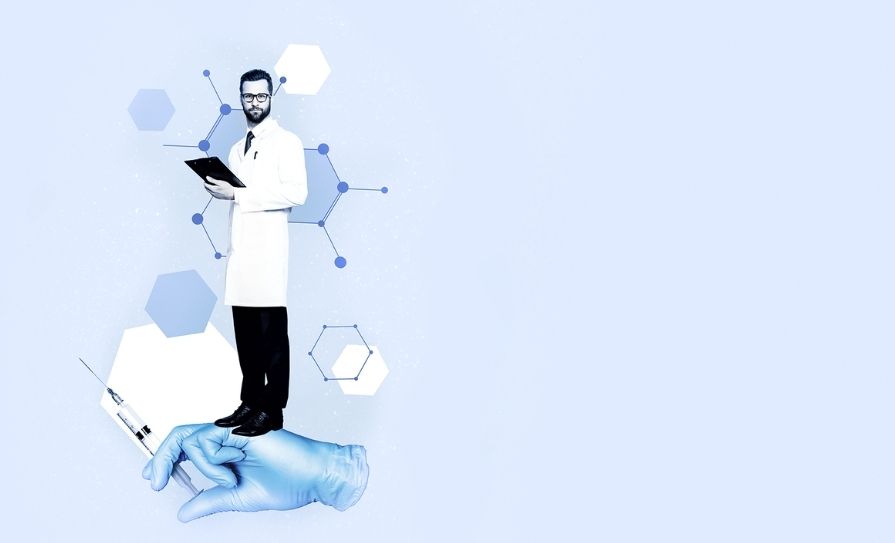For the more than 40,000 people suffering with IBD in Ireland, the pharmacist is their most accessible healthcare professional, writes Damien O’Brien MPSI
Introduction
Inflammatory bowel disease (IBD) is a chronic inflammatory condition of the gastrointestinal tract, characterised by immune-mediated inflammation and tissue damage. IBD encompasses two distinct diseases, ulcerative colitis (UC) and Crohn’s disease (CD), which are differentiated by their location and the depth of bowel wall involvement. Both conditions have a significant morbidity burden and are incurable; however, many treatment options are available.
It is estimated that more than 40,000 individuals are living with IBD in Ireland. Pharmacists are accessible healthcare professionals and can play a crucial role in the management of this chronic condition. This role involves patient education, counselling on lifestyle modifications, and advising on pharmacological and non-pharmacological treatments.1,2
Aetiology and pathophysiology
The exact aetiology of IBD is unknown. There is a significant genetic component, with a family history of the disease being the most important independent risk factor. A large number of suspected IBD-associated genes have been identified. Evidence suggests that the disease may arise from an inappropriate immune response to environmental antigens, such as intestinal microbes, drugs or toxins, in genetically susceptible individuals.
CD has a strong correlation with smoking tobacco, while smoking appears to have a protective effect against UC. However, smoking should not be encouraged due to its numerous other health risks.1
The intestinal immune system is critical in the pathophysiology of IBD. Under normal physiological conditions, the intestinal epithelium prevents the entry of bacteria or antigens through sealed intercellular junctions. In IBD, these junctions are defective, either due to failure of the primary barrier function or as a consequence of severe inflammation. These inflammatory responses exacerbate the damage to the intestinal epithelium, allowing further microbial exposure and perpetuating the cycle of inflammation.1
Overview
CD and UC are the two primary conditions within the umbrella of IBD. While they share some similarities, they differ in many aspects. General symptoms of IBD include abdominal pain, fatigue, fever and weight loss.
UC is the most common form of IBD. It is an inflammatory condition characterised by inflammation confined to the mucosa and submucosa of the colon. The disease typically begins in the rectum and extends proximally in a continuous manner. The onset is generally gradual, with periods of remission and relapse. The main symptoms of UC include rectal bleeding, passing mucus, urgency to defecate, frequent need to defecate, and tenesmus. Smoking cessation and the use of nonsteroidal anti-inflammatory drugs (NSAIDs) tend to exacerbate UC symptoms. Common complications of UC include severe bleeding, toxic megacolon, and an increased risk of colorectal cancer.1,3
CD is an inflammatory gastrointestinal disease that can affect any part of the digestive system, from the mouth to the anus. While symptoms often occur in the intestine, the mouth, oesophagus, and stomach can also be affected. Inflammation in CD tends to be non-continuous, with healthy patches frequently present between lesions. The manifestation of CD varies depending on the area involved. Initial symptoms may include abdominal pain, diarrhoea, flatulence, and fever, followed by periods of remission.
Stress, whether physical or emotional, is
often associated with symptom relapse
More severe symptoms may present after repeated flare-ups, and these can include severe right lower quadrant pain, chronic diarrhoea, and anorectal pain. Malnutrition and weight loss are more common in CD due to intestinal involvement. Stress, whether physical or emotional, is often associated with symptom relapse. Common complications of CD include strictures, fistulas and abscesses.1,4
Patients with IBD are predisposed to extraintestinal manifestations of the disease, which may appear before the onset of intestinal symptoms. Extraintestinal involvements in UC are present in 10-to-30 per cent of patients and are mainly associated with the skin, eyes and bones. Commonly observed conditions include episcleritis, scleritis, uveitis, peripheral arthropathies and erythema nodosum. Primary sclerosing cholangitis is a significant hepatic extraintestinal manifestation of UC and is associated with an increased risk of colorectal cancer.
Extraintestinal manifestations of CD primarily arise due to systemic inflammation and may include arthritis, uveitis, ankylosing spondylitis, and renal disorders. The incidence of gallstones and kidney disease is higher in CD, primarily due to the malabsorption of bile salts and fatty acids. Amyloidosis is a rare and late-stage manifestation of the disease.1,3,4
Diagnosis
IBD is diagnosed based on a combination of clinical findings, inflammatory laboratory markers, imaging studies, and endoscopic biopsies. Endoscopic evaluation, using either esophagogastroduodenoscopy or colonoscopy, is essential for diagnosing IBD. A wide range of other evaluations may also be used. Parasitic diseases and tuberculosis should be ruled out in the differential diagnosis. A complete blood count may help to identify anaemia, leucocytosis and hypalbuminaemia. Evaluation of erythrocyte sedimentation rates (ESR) and C-reactive protein (CRP) levels can be useful, as they are associated with intestinal inflammation. Faecal calprotectin levels can serve as a non-invasive marker for intestinal inflammation.
Imaging techniques, such as ultrasound, computed tomography (CT) and magnetic resonance imaging (MRI), are particularly valuable for assessing intra-abdominal complications. Abdominal x-rays can be used to detect free air, bowel obstruction, or toxic megacolon.
Pharmacological treatment
The main objectives of pharmacological treatment are to induce and maintain remission, prevent complications and improve the patient’s quality of life. The choice of treatment depends on the disease type, severity, location, extraintestinal manifestations, and patient-specific factors.
There is no pharmacological or surgical cure for IBD. Several pharmacological treatment options are available, including aminosalicylates, corticosteroids, immunomodulators, biologics and Janus kinase (JAK) inhibitors. A stepwise approach is often required for the pharmacological management of IBD, with additional treatments for flare-ups as necessary.1
Aminosalicylates
Mesalamine and sulfasalazine are aminosalicylates used in the treatment of IBD. The exact mechanism of action of aminosalicylates is unclear, but it is thought that they reduce the inflammatory response through the cyclooxygenase and lipoxygenase pathways, thereby decreasing the synthesis of prostaglandins and leukotrienes.
Sulfasalazine is a prodrug made up of mesalamine and sulfapyridine, which is metabolised by bacteria in the colon into its active components, allowing mesalamine to work locally in the colon. Oral or rectal administration of aminosalicylates can be used as first-line treatment for mild-to-moderate UC, achieving a remission rate of about 50 per cent. Aminosalicylates can be used to both treat and prevent flare-ups of UC. However, their use in CD is less well-established. They may be beneficial for treating mild colonic CD, but are ineffective in the small intestine. Aminosalicylates remain a mainstay of treatment for mild-to-moderate disease limited to the rectum. Common adverse effects of aminosalicylates include nausea, vomiting, anorexia, dyspepsia, headache, and skin rash.
Sulfasalazine is associated with reversible male infertility, which resolves after discontinuation of treatment. Less-common adverse reactions include leukopenia, thrombocytopenia, and haemolytic anaemia. Renal function should be carefully monitored both before and during treatment.3,4,5,6
Immunomodulators
Immunomodulator agents are effective in treating patients with IBD, with examples including thiopurines and methotrexate. Immunomodulators are steroid-sparing agents used in the maintenance therapy of mild-to-moderate IBD. They have a slow onset of action, which can take up to 12 weeks, and therefore are not effective in treating flare-ups.
These agents may be used in combination with steroids to reduce inflammation initially. They can also be used in the treatment of moderate-to-severe disease in combination with biologics, serving as an adjunct to reduce immunogenicity against biologics. Combination therapy with an immunomodulator and a biologic may be more effective than monotherapy with either medication. Azathioprine works by inhibiting purine synthesis, resulting in decreased DNA and RNA production in white blood cells, thereby causing immunosuppression. It is typically administered orally and requires 6-8 weeks to take effect.
Nausea is the most common adverse effect, which is dose-dependent. Other common adverse effects include fever, myalgia, fatigue, bone marrow suppression, and rash. Rarer adverse effects include carcinogenesis, pancreatitis and alopecia.3,4,7,8
Methotrexate is an antifolate drug that causes immunosuppression by inhibiting T-lymphocyte proliferation and activation. Methotrexate is effective at achieving clinical remission in CD patients, but may not be as effective in UC. It is typically administered once weekly, either orally or via injection (intramuscular, intravenous, intrathecal or subcutaneous).
Folic acid supplementation should be considered to reduce the risk of bone marrow suppression. The most common adverse effects are gastrointestinal issues such as nausea, vomiting, ulceration and loss of appetite. Methotrexate also has more serious and potentially life-threatening adverse effects, including teratogenicity, pancreatitis, bone marrow suppression, malignancy, infection, and renal failure.3,4,7,9
Biologics
Biologic agents are effective in treating moderate-to-severe disease. In recent times, a stepwise approach to the treatment of IBD has been adopted, where biologics are introduced earlier in high-risk patients and patients with severe disease, with de-escalation once a clinical response is achieved.
Biologic agents have the advantages of reduced toxicity, high selectivity, and high efficacy compared to other disease-modifying therapeutic options. Anti-tumour necrosis factor (TNF) therapy and anti-interleukin (IL)-12/23 therapy are the two main categories of biologic agents used to treat IBD. TNF is a proinflammatory cytokine that can cause chronic inflammation and tissue damage when overexpressed. Golimumab, infliximab and adalimumab are three examples of anti-TNF agents licensed for treating IBD.
The main adverse effects associated with anti-TNF therapy include an increased risk of infection, congestive heart disease, malignancies, drug-induced lupus, and skin reactions. Anti-TNF agents are effective in corticosteroid-resistant or immunomodulator-refractory CD. Their effect is relatively rapid, with benefits being observed within two weeks of initiation.3,4,10
IL-12 and IL-23 are pro-inflammatory cytokines involved in intestinal inflammation and the pathophysiology of IBD. Ustekinumab is an example of a commonly-used drug that reduces the activity of IL-12 and IL-23, thereby decreasing intestinal inflammation in IBD. It can be effective in patients who have failed prior corticosteroid, immunomodulator or anti-TNF treatments. The most common adverse effects of this treatment option include nasopharyngitis, headache, increased risk of infection, cardiovascular events, and malignancies.3,4,10
Leukocyte trafficking agents work by selectively inhibiting an adhesion protein (integrin ?4?7) on a memory T cell, preventing the T cells from binding to mucosal cells in the intestine. This produces anti-inflammatory effects specific to the intestine and is effective in inducing and maintaining remission in CD. Vedolizumab is an example of an agent in this class used to treat CD. The time to effect is slower than that of anti-TNF therapy, and may take around 10 weeks. The adverse effect profile is favourable due to the specificity of the drug.4
A Janus kinase (JAK) inhibitor targets enzymes that contribute to abnormal immune responses and, therefore, reduces inflammation. Upadacitinib and tofacitinib are two JAK inhibitors used to treat IBD and are administered orally. They are effective in treating patients who have previously failed conventional and biologic treatment options. The onset of action is rapid, occurring within two weeks. These drugs increase the risk of herpes zoster virus and, therefore, the shingles vaccine is recommended before initiating treatment.4
Corticosteroids
Corticosteroids are a useful therapeutic option if other treatment options have failed or in the case of flare-ups. Corticosteroids work through multiple pathways, producing anti-inflammatory and immunosuppressive effects. They are very effective in reducing inflammation and inducing remission in IBD. They can be used both orally and rectally.
Corticosteroids are primarily used to induce remission and stabilise the condition until immunomodulator or biologic therapy take effect, particularly in moderate-to-severe disease. Prolonged corticosteroid use, particularly systemic use as maintenance therapy, is not recommended due to chronic adverse effects such as osteoporosis, adrenal insufficiency, mood changes, blood glucose fluctuations, and venous thromboembolism.
Second-generation corticosteroids, such as budesonide, have a more favourable safety profile than conventional corticosteroids. Targeted delivery of corticosteroids to the site of inflammation is important to reduce systemic adverse effects.3,4,11
Non-pharmacological treatment
There are several non-pharmacological treatment options available, either as monotherapy or in combination with pharmacological treatment. The rate of surgical intervention has decreased since the development of biologics, but it remains an important treatment option. Surgery may be used in cases of refractory disease or when complications such as strictures, intestinal perforation, heavy bleeding or carcinogenesis are present. It may also be indicated if a patient with severe IBD can’t tolerate pharmacological treatment. Colectomy in UC may be curative as the disease is restricted to the colon, while the aim in CD is to manage complications.3,4
Dietary management and nutritional support may be used as an adjunct to treatment, particularly in CD. Symptomatic CD patients are at a higher risk of malnutrition and micronutrient deficiencies due to reduced absorption in the small intestine. An individualised plan based on symptoms and nutritional deficiencies should be implemented for these patients.
Patients with CD may need supplementation to address deficiencies in iron, vitamin D, calcium, and vitamin B12. Smoking cessation programmes may also help to reduce exacerbations of CD. Stress management techniques can help to reduce stress and thereby lower the risk of IBD flares. Additionally, there is some evidence that probiotics may play a role in achieving remission in IBD. Faecal microbiota transplantation (FMT) is a method of establishing healthy intestinal microbiota and may be useful in treating UC.3,4
Role of the pharmacist
IBD is a complex condition that requires a multidisciplinary approach for effective management. Pharmacists are accessible healthcare professionals, ideally positioned in the community to play an important role in supporting patients with IBD. Pharmacists can educate patients on medication management, methods to reduce adverse effects and the importance of adherence to the medication regimen. They can also monitor the response to treatment and refer patients to other healthcare professionals when necessary.
Finally, pharmacists can work collaboratively with other healthcare professionals to empower patients, improve clinical outcomes, and reduce the burden on the healthcare system.
References
- McDowell C, Farooq U, and Muhammad Haseeb (2023). Inflammatory Bowel Disease. [online] Nih.gov. Available at: https://www.ncbi.nlm.nih.gov/sites/books/NBK470312/.
- Crohn’s & Colitis Ireland (2020). FAQs | Crohn’s & Colitis Ireland. [online] Available at: https://crohnscolitis.ie/support/faq.
- Lynch WD, and Hsu R (2023). Ulcerative colitis. [online] National Library of Medicine. Available at: https://www.ncbi.nlm.nih.gov/books/NBK459282/.
- Ranasinghe I, and Hsu R (2024). Crohn Disease. [online] PubMed. Available at: https://www.ncbi.nlm.nih.gov/books/NBK436021/.
- Nakashima J, and Preuss CV (2021). Mesalamine (USAN). [online] PubMed. Available at: https://www.ncbi.nlm.nih.gov/books/NBK551714/.
- Choi J, and Fenando A (2020). Sulfasalazine. [online] PubMed. Available at: https://www.ncbi.nlm.nih.gov/books/NBK557809.
- Ardizzone S, Cassinotti A, Manes G, and Bianchi Porro, G (2010). Review: Immunomodulators for all patients with inflammatory bowel disease? Therapeutic Advances in Gastroenterology, 3(1), pp.31–42. doi:https://doi.org/10.1177/1756283×09354136.
- Mohammadi O, and Kassim TA (2023). Azathioprine. [online] Nih.gov. Available at: https://www.ncbi.nlm.nih.gov/sites/books/NBK542190/.
- Hanoodi M, and Mittal M (2023). Methotrexate. [online] PubMed. Available at: https://www.ncbi.nlm.nih.gov/books/NBK556114/.
- Sapkota B, Makandar SN, and Acharya S (2020). Biologic Response Modifiers (BRMs). [online] PubMed. Available at: https://www.ncbi.nlm.nih.gov/books/NBK542200/.
- Kalola UK, and Ambati S (2020). Budesonide. [online] PubMed. Available at: https://www.ncbi.nlm.nih.gov/books/NBK563201/.







